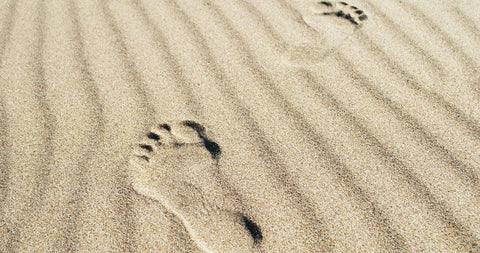
Top tips to treat blisters when hiking
Stop as soon as you can feel pain!
Early detection is key and it’s best to stop as soon as you can feel the slightest hotspot. The sooner it’s addressed, the better, even though when you are with a walking group it’s not always convenient to do so as it’s an unplanned stop.
Cleanliness is key
Remove your shoe and sock to find the source of the blister and gently wipe both your hands and the sore area clean with an antibacterial wipe. It’s most important to keep out dirt and bacteria.
Don’t pop it
Don’t be tempted to pop a blister. It’s not usually necessary (unless the blister is on the stressed part of the foot, such as the heel or ball of the foot) and the damaged, overlying skin encourages a cushion of fluid to fill the area underneath it which protects the more delicate skin. Keeping the blister intact also prevents it from infection.
Use the right type of dressing
Scholl blister plasters provide a hydrocolloid dressing containing a gel forming agent to protect the healing area from further friction. They are breathable, so allow air to get to the blister to aid recovery. They are also waterproof and prevent any unwanted sweat or water from getting into the wound.
Dress your blister
To dress it, you need to create a protective and durable layer between the foot and your shoe. The easiest way is to cover it with a proper blister plaster, such as the Scholl blister plaster, which is easy to apply and, so long as the affected area is clean and dry, can be left on for up to a week while it heals. Make sure the adhesive portion of the plaster is outside the blister itself.
Infection
As your blister heals, keep a watch out for redness or swelling. This may mean it has become infected and it should be seen by a doctor.
The healing process
Recovery from a blister may take one to two weeks to heal. With the right covering, it should be possible to maintain hiking activities though inevitably the cause of the injury should be eliminated.
First aid kit
So don’t get caught out! A blister plaster pack is an essential for your hiking first aid kit. Be prepared - even the most experienced walkers have had occasions when they have developed a blister and know how painful each step can be.
